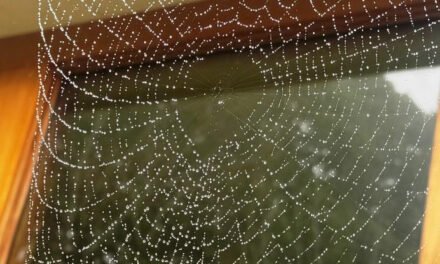Diane Beddison
PLANT OF THE MONTH
One of my favourite shrubs is Luculia gratissima, enjoyed even more because it flowers in June and July when there aren’t many flowers about. It cheers me up on a cold grey day to see the gorgeous pink flowers upon large fresh green leaves outside of the family room. Feels like a touch of the tropics. You can choose from fragrant delicate pink or white flowers.
Luculia needs a sheltered position protected from frost and western sun but with enough sun to flower well. Provide plenty of organic mulch around the roots and some supplementary water during warmer weather. This Luculia grows to 3m tall and tends to be a bit leggy. Place a compact plant about 1m tall in front of this beauty to complete the picture.
And if you prefer something unusual check out other Luculia species in botanical gardens and rare plant nurseries.
GARDENING FUN
Plant growth has now slowed, deciduous plants have lost their leaves and herbaceous plants have retreated into the soil. And as the days get colder, we tend to escape indoors. But don’t think there is nothing to do outdoors. Time spent in the garden now will pay big dividends in spring.
Many dormant plants require a hard prune during winter, such as deciduous fruit trees and roses. This is also a good time to move or repot deciduous trees. Prune any broken limbs or roots and neaten their shape.
Visit your local nursery for some planting ideas. July is a great time to choose a new Camellia. There are so many wonderful Hellebores on offer this year, and new seasons roses will be in a nursery near you soon.
PRUNING ROSES
Most roses should be given a hard prune in July or August in the Hepburn Shire. Wait until serious frost has passed. However, roses which flower only in spring, should be pruned once flowering has finished. Pruning roses is good for them. It removes diseased canes, improves air flow, and promotes new growth. This encourages more flowers and larger flowers. So have a go.
There are many different approaches to rose pruning. Here are a few general tips for pruning bush roses (includes floribunda, hybrid tea and modern shrub roses). Heritage roses do not require a hard prune. Nothing beats a pruning demonstration, so check out what is being offered locally.
- Sharpen the blade of your secateurs and clean them as well as you can. Then spray them lightly with oil. For older roses you may need a pruning saw for removing canes.
- Cover your body well and wear strong gloves, to avoid being scratched.
- Remove any dead or diseased canes. If two canes are crossing, keep the strongest and remove the other one. Make sure you remove any suckers coming from root stock of grafted roses.
- Now remove one or two of the old brown unproductive canes, keeping at least two healthy canes. Remove any remaining leaves.
- Roses should be pruned to a neat fan shape for aesthetics and growth. If you have any new water shoots prune them lightly. Prune remaining canes down by half. Select outward facing buds, and cut just above the bud at an angle.
- Clean up around the base of the rose, removing any rose leaves along with old mulch. Do not recycle any rose material. Water after pruning.
- Spray your roses thoroughly with Lime Sulphur to remove fungal spores and eggs from pests. Do not use this chemical during the growing season.
GARDEN DESIGN
In Winter, many plants are dormant making it a great time to take a critical look at your garden. Use this opportunity to plan how to take your garden to next level.
A garden must be practical providing easy transition between spaces. Do you have enough hard structures in your garden or are some areas difficult to access? Make sure you have lawn or paths to access the important destinations in the gardens. If your garden is on a slope, you may need retaining walls and connecting steps.
Is the garden safe for the residents and visitors who use it? Are existing built structures good quality or are some pavers or steps a trip hazard. Retaining walls and garden edges may not be doing their job anymore.
Gardens need a good structure. This allows a garden to still look good in winter. Structure is readily created by hard landscaping. However, structure can also be achieved by choice of plants and how they are managed. For example, consider the impact of a hedge or feature tree.
Does your garden need more permanent plants? If so, add more evergreen shrubs and perennials.
‘A garden is a grand teacher. It teaches patience and careful watchfulness; it teaches industry and thrift; above all it teaches entire trust.’ Gertrude Jekyll
Happy Gardening
Diane Beddison is a frequent visitor to Daylesford and the Principal of Beddison Garden Designs




